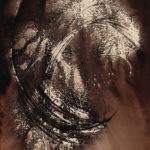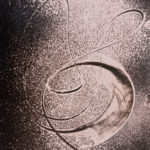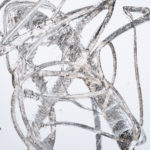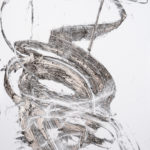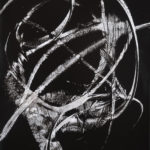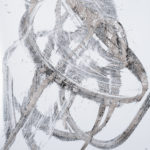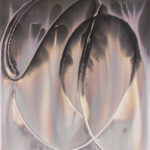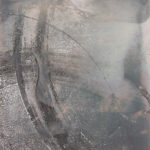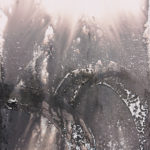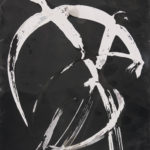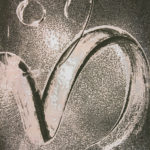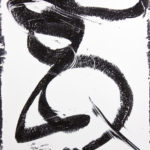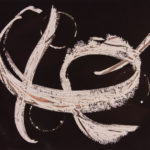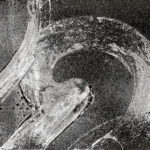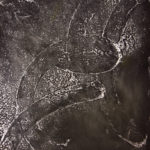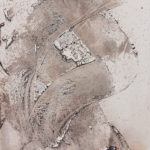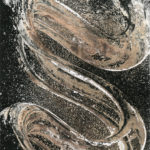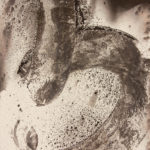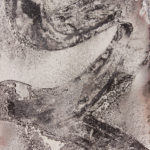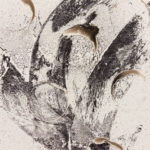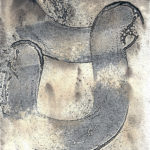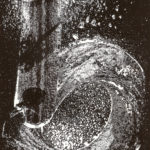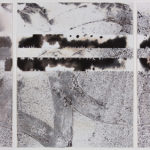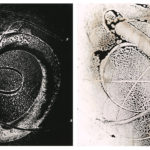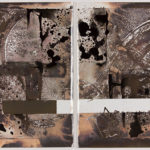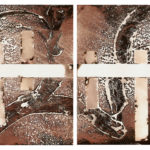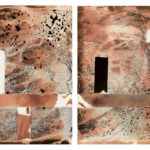Language Acquisition: Gestures (2015 – present)
After my first few years of studying photography in the late 1990’s, I began to shy away from the darkroom. Silver gelatin prints were the standard in the photographic world, and quickly becoming unsatisfying to me. I wished to see the physical mark in my work, and to create objects. Photography as I knew it felt mass-produced and devoid of this materiality. When visiting art museums, I was drawn to paintings more than anything – to see the actual brushstrokes in person and meditate on how each one was put in place by the artist’s own hand. Even in those early days of the Internet, I understood the significance of witnessing a physical artwork in three dimensions, of being in its presence.
Once digital photography became the standard, the darkroom lured me back, as the tables had turned and a silver gelatin print presented itself to me as an object. Chemigrams became a natural progression for me to explore photographic paper as a physical medium unto itself, rather than simply the substrate upon which an image taken from the outside world rests. The application of a resist on silver gelatin paper, and my instinctual and immediate gestures created on the paper, satisfies the missing mark of the artist that I had found to be lacking in photography. As society has evolved in over 20 years through the growth of the online world and a pandemic, I find the process satisfies even more than that one concern of that young artist.
This gestural work addresses unease with the negative effects of American society’s increasingly digitized existence. I witness younger generations who have challenges with basic mechanical tasks that I take for granted. I see less awareness of and respect for physical space when interacting with strangers in public. Even as education can adapt to online offerings and offer positive outcomes, I grow apprehensive as many artmaking mediums are frequently tied to equipment and facilities that are being eliminated. By making direct marks on light-sensitive photographic materials, a medium in which the physical piece of paper is often ignored, I call for a reconnection to materiality and in-person interaction. My gestures reflect various mental states as I contemplate these issues, from quiet and content to frustrated and loud. Their ambiguous resemblance to letterforms references the difficulty of communicating such a pervasive societal matter. The chemigram process itself, with its endless variables and lack of controlled outcomes, celebrates the rare sense of mystery and awe that our constantly digitally-connected world robs from us, fueling an epidemic of anxiety.
